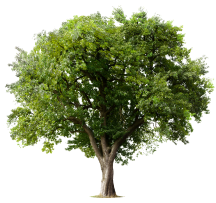December 23, 1947 - March 27, 2014 Richard M. Forester passed away suddenly at his home in Lakewood, Colorado on March 27, 2014. He was born December 23, 1948 in Hancock, NY to Clayton and Ellen Forester. (His father was one of the previous owners of The Hancock Herald). His parents predeceased him. He is survived by his sister Mary Beth Michaud of Middletown, NY, a niece Elizabeth, a nephew Robert, a great niece Olivia, an aunt Helen Lester, and several cousins. The nonmarine science community lost an innovative and critical thinker. Rick pioneered the use of nonmarine ostracode species as indicators of present and past hydrologic conditions. He demonstrated that each species' position in the solute evolutionary path defined ecological and hydrochemical conditions that convey valuable information about the hydrology of the nonmarine water body. He also identified the importance of groundwater in the hydrologic budget of many lakes by demonstrating that many ostracode species prefer groundwater discharge environments. Rick extended these concepts to the interpretation of fossil ostracode assemblages and showed that the paleohydrology of water bodies (extant or extinct) could be reconstructed from them. Rick's expertise in studies of past and present hydrologic systems was pivotal to investigations of the long-term impacts of climate and groundwater on waste isolation at the proposed geologic repository for high-level radioactive waste at Yucca Mountain in southern Nevada. Rick led the U.S. Geological Survey's Yucca Mountain Climate Program from 1991 to 2000. His reconstructions of past climate in the Southwest established the foundation for predictions of future climate and its potential impact on repository hydrology for the Department of Energy. His genius for numbers and patterns allowed him to recognize a relation between the Devils Hole, Nevada, isotope record and Milankovitch cycles that could be projected into the future to estimate climate cycles. Rick had an astute and analytical mind, because of that he was able to effectively lead a multidisciplinary team working on the Yucca Mountain Climate Program, as his knowledge was very broad and did not stop at ostracodes and groundwater. Rick worked in the USGS from 1977 until he retired in October, 2005. During his career, he discovered and described new ostracode species from different environments in western North America. He devised sampling protocols and documented ostracode species' modern geographic ranges, climates, and aquatic chemistry and, with Alison Smith, Don Palmer, and Brandon Curry, made this information available online at the North American Nonmarine Ostracode Database (NANODe). Rick interacted across scientific disciplines with numerous USGS scientists, including nonmarine diatom specialist Platt Bradbury and other paleolimnologists, to devise approaches to use multiple indicators to construct past lacustrine and wetland environments. In 2005, Rick was nominated and elected by his peers as a Fellow of the American Association for Advancement of Science for meritorious efforts to advance science in the fields of past climate and hydrology, in particular working with nonmarine ostracodes. He authored over 100 professional publications and reports during his career. He served on numerous Ph.D. committees, a tribute for someone not in academia. He mentored many graduate students on the identification and the ecological and hydrochemical significance of nonmarine ostracode assemblages and engendered a new community of nonmarine ostracode workers in North America and overseas. He was passionate about the graduate students he helped and his commitment to their science and well-being continued well after their graduation. His research interests were broad, and colleagues from many fields sought his collaboration because of his keen mind, ability to think outside of the box, and attention to detail. He was patient, generous with his time, and always ready to help, whether it be a student, a colleague, or a neighbor. He was fascinated by the science and mathematics of the stock market and created successful investment strategies for himself and a few lucky friends. He was good natured with a good sense of humor. He loved good beer, good red wine, and enjoyed anything containing chili peppers (the hotter the better), and dessert. Cats were always a favorite interest, and he particularly enjoyed the companionship of Tauron, a Persian-tabby cat of notable perspicacity. Tauron would sit next to the microscope and watch him work, taking great interest in the transfer of microfossils from picking tray to slide, on the tip of a brush. Indeed, after the passing of Tauron, he chose not to keep a pet, observing that he had met the best. Rick grew up in the small town of Hancock, New York, in the western Catskills. His family history was steeped in the culture of rural New York and the coal country of Pennsylvania around Scranton. His mother taught in a one-room schoolhouse, and his father owned the local newspaper. He was the first in his immediate family to go to college. He received a B.S. in Geology from Syracuse University in 1969. He began graduate school at the University of Illinois, Urbana, supported through a Teaching Assistantship. He completed an M.S. on stable isotope geology in 1972 under Tom Anderson, and a Ph.D. on probability and ostracode ecology in 1975 under Philip Sandberg. He was urged by John Carter, a research paleontologist at Illinois, to apply for a National Research Council postdoctoral position with the U.S. Geological Survey. Rick prepared a submission to Joseph Hazel, U.S. Geological Survey, proposing further work on probability and ostracodes. He was awarded the NRC postdoc, but found that he would be working on biostratigraphy of Miocene marine ostracodes at the USGS offices at the National Museum of Natural History in Washington, D.C. Upon completing the postdoc, he was hired as a Research Geologist by the U.S. Geological Survey in Denver, Colorado. His new research project was working with Tom Fouch and the Energy Team on nonmarine ostracodes from the Paleogene Green River Formation in Utah. He spent considerable time learning the difficult systematics and paleoecology of nonmarine ostracodes. Through this project, he became acquainted with Denis Delorme, Canada Center for Inland Waters, a specialist in nonmarine ostracode taxonomy, and with Blair Jones, a geochemist/hydrologist at USGS Reston, as Rick delved deeper into understanding the geochemical environment of nonmarine ostracodes. While working as a teaching assistant at University of Illinois CU Geology Department, Rick met and married Elisabeth Brouwers, currently an ostracode specialist and stratigrapher at the USGS. During their 15-year marriage they published several papers on estuarine ostracodes together. A special session, # T-247 “The legacy of Richard Forester: Seminal contributions towards understanding Quaternary climate, continental waters and ostracodes” is scheduled at the Annual Meeting of the Geological Society of America to be held in Vancouver, BC October 19-22, 2014. We encourage those who were influenced by Rick's work to submit abstracts. We encourage others with an interest in the interactions among hydrology, aquatic biota, climate, and geochemistry to attend the session.
To order memorial trees or send flowers to the family in memory of Richard M. Forester, please visit our flower store.





